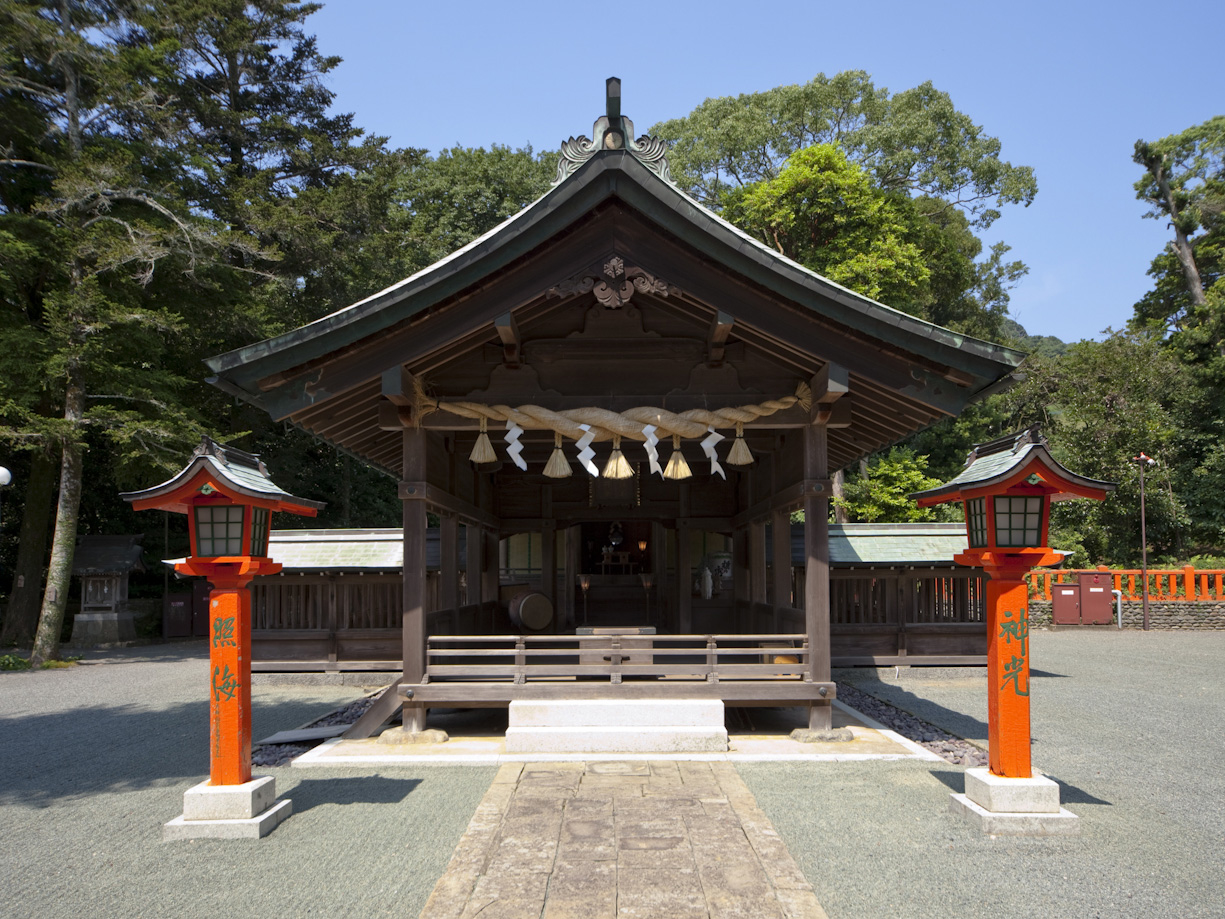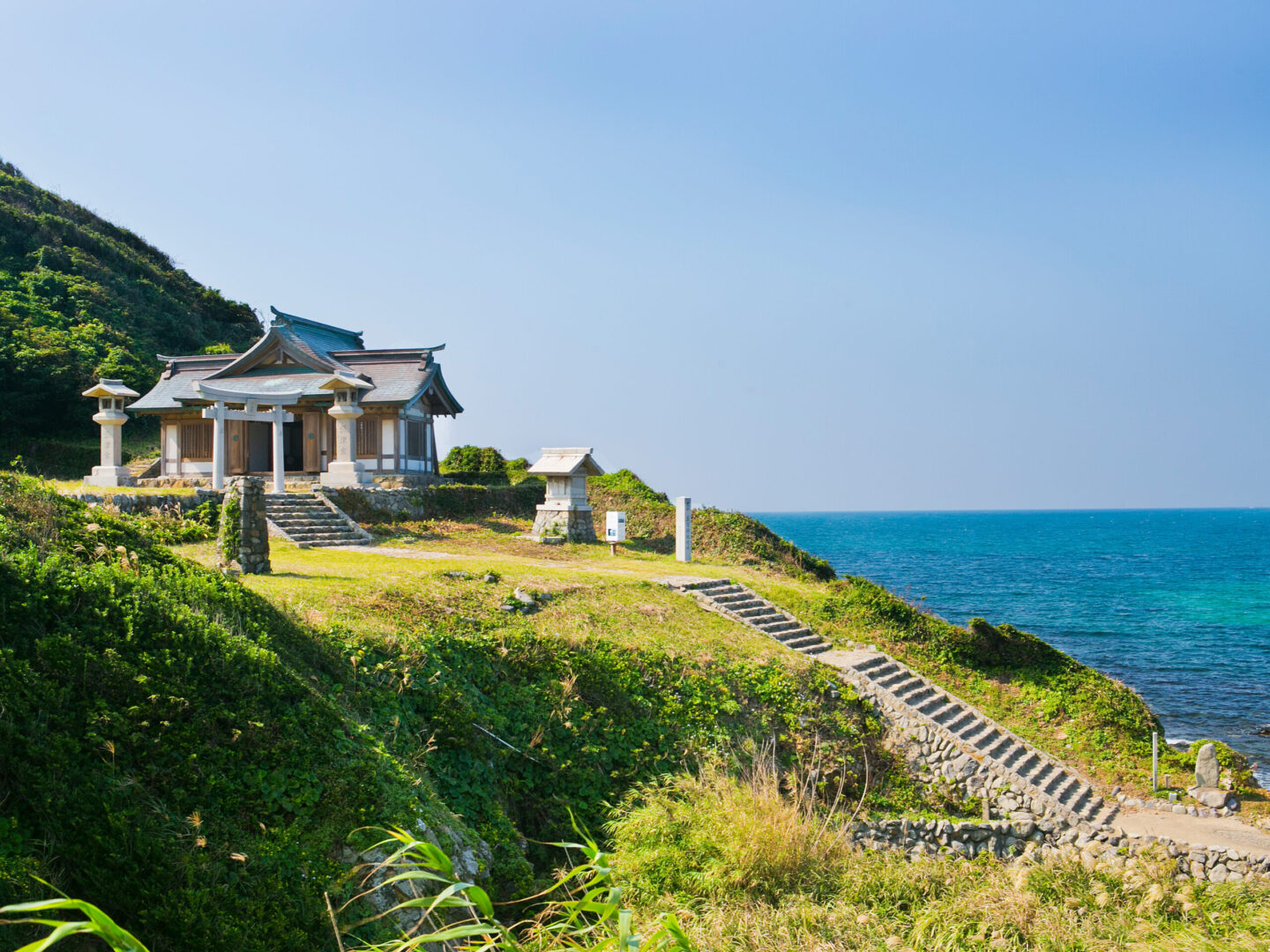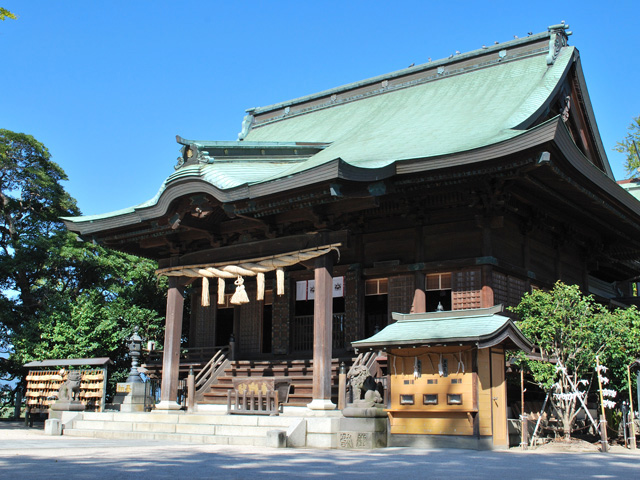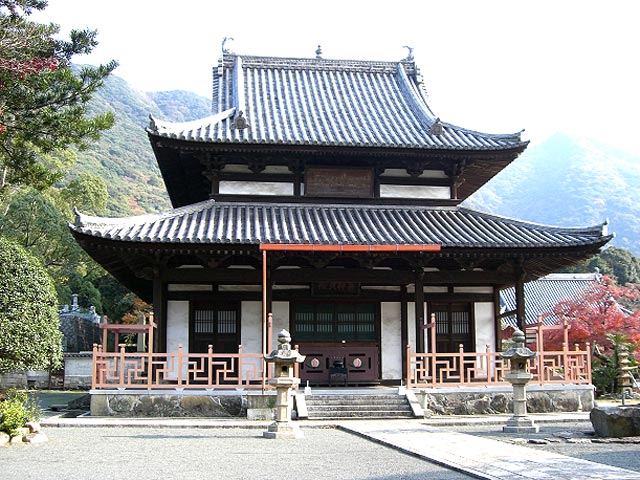
宗像大社沖津宮遙拝所
大島北側にある沖ノ島(宗像大社沖津宮)の遙拝所。島全体がご神体である沖ノ島は厳格な禁忌によって古くから一般人の渡島は禁止。そのためこの地から遥か沖に浮かぶ島を拝してきた。遙拝所への石段脇に立つ「寛延3年(1750)」と刻まれた石碑から、江戸中期には遙拝所が造られたと分かる。現在の遙拝所は昭和8年(1933)の建築。天気の良い日にはここから約50km離れた水平線に浮かぶ沖ノ島を拝することができる。世界遺産“「神宿る島」宗像・沖ノ島と関連遺産群”の構成資産の1つ。
Info
Business Hours
Price
Spot Category

湍津姫神を祭る中津宮
The information provided reflects the details available at the time of the survey.
Please note that facility details may change due to the facility’s circumstances, so please check for the latest information before visiting.
This content has been translated using machine translation.
Information provided by: JTB Publishing
The content uses an automatic translation service, which is not always accurate.
The translated content may be different from the original meaning, so please understand and use it.

大島北側にある沖ノ島(宗像大社沖津宮)の遙拝所。島全体がご神体である沖ノ島は厳格な禁忌によって古くから一般人の渡島は禁止。そのためこの地から遥か沖に浮かぶ島を拝してきた。遙拝所への石段脇に立つ「寛延3年(1750)」と刻まれた石碑から、江戸中期には遙拝所が造られたと分かる。現在の遙拝所は昭和8年(1933)の建築。天気の良い日にはここから約50km離れた水平線に浮かぶ沖ノ島を拝することができる。世界遺産“「神宿る島」宗像・沖ノ島と関連遺産群”の構成資産の1つ。

九州本土から約60km沖に浮かぶ周囲4kmの「神宿る島」と呼ばれる島。宗像三女神の1柱である田心姫神[たごりひめのかみ]を祭る沖津宮であり、小屋島、御門柱、天狗岩の3つの岩礁をもつ島全体がご神体だ。航海の道標となり、皇室・国家の安泰を願って国家祭祀が行われた。社殿が立つ島南西側の中腹には22もの祭祀遺跡が残り、祭祀の変遷を示して国指定史跡に、遺跡から出土した神宝約8万点は国宝に指定。今も厳格な禁忌が受け継がれ一般の入島は不可。世界遺産“「神宿る島」宗像・沖ノ島と関連遺産群”の構成資産。

「神宿る島」宗像・沖ノ島と関連遺産群は、「神宿る島」を崇拝する伝統が古代東アジアの活発な対外交流の中で発展し、今日まで継承されてきた貴重な遺産群だ。沖ノ島(宗像大社沖津宮)では、古代祭祀遺跡がほぼ手つかずの状態で守り伝えられてきた。その祭祀は大島の宗像大社中津宮と九州本土の宗像大社辺津宮にも広がり、沖ノ島を遥拝するための沖津宮遙拝所も設けられた。新原・奴山古墳群は、信仰の伝統を築いた古代豪族宗像氏の墳墓群だ。

A town where temples were collected during the Edo period for the defense of Kurume Castle. It is lined with 17 temples, and still retains the features of the Edo period. In each quaint temple there are tombs of many of the predecessors who were active in Kurume. The most well-known people are King Shishi Takayama Hikokuro, the founder of Kurume mochi, Inoue Den, the founder of Kurume Atsuji, Motozo Sakamoto, and the Western painter Harue Koga.

Sōhō-gū of Suiten-gū, which is located throughout the country. The beginning was that Ise, who served Emperor Andoku's birth mother, Takakura Taira Nakamiya [Azechi no Tsuboune], enshrined the spirit of the Heike, who had perished in the Battle of Nōnoura, to mourn. It is known as the guardian deity of asanis, child-giving, water-relief, and children.

The temple of Obaku sect in a corner of Adachi Forest Park. The feudal lord, Tadamasa Ogasawara, was erected in Kanbun 5 (1665). It was later vanished by military fire and fire of Chōshū Cavalry at the end of the Tokugawa period. The main hall was rebuilt in Kyoho 2 (1717). Kaesando and others were built after the Meiji era. There is a garden behind the main hall, and the Sesshu Garden, which has natural stones in a borrowed view of Mount Ashitate, is a must. Please note that some of the precincts in the direction of the back mountain are unwatchable.
This website uses cookies so that we can provide you with the best user experience possible. Cookie information is stored in your browser and performs functions such as recognising you when you return to our website and helping our team to understand which sections of the website you find most interesting and useful.
Strictly Necessary Cookie should be enabled at all times so that we can save your preferences for cookie settings.
If you disable this cookie, we will not be able to save your preferences. This means that every time you visit this website you will need to enable or disable cookies again.
